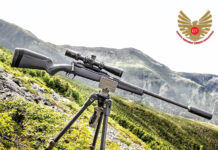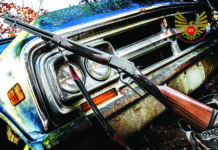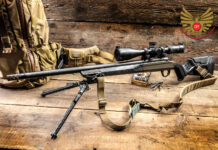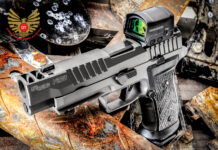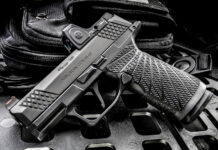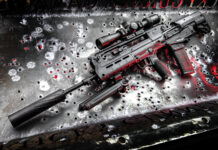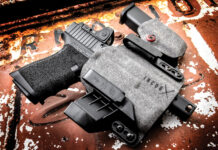Back in the mid 1950s, following the end of the Korean War, the U. S. Army was desperately in need of a new infantry rifle to replace the World War II vintage M1 Garand. The Army began testing a couple of selective-fire rifles chambered in 7.62x51mm NATO—Springfield Armory’s T44 and Fabrique Nationale’s FAL—when a third design was submitted by a tiny company and a then-unknown designer. The company was ArmaLite Corporation; the designer was Eugene Stoner; and the rifle was called the AR-10.

The Springfield Armory T44 was basically an M1 Garand modified to chamber the 7.62 NATO round, with a redesigned receiver to accommodate 20-round detachable box magazines and add selective-fire capability. The FN FAL (Fusil Automatique Léger, or Light Automatic Rifle), while similar in concept to the T44, was much different in both design and operation, but also featured 7.62 NATO chambering, 20-round detachable box magazine and selective-fire capability. Both were all-steel designs with short-stroke gas-piston operating systems, traditional receiver-/barrel-mounted iron sights, and wood furniture with the butt ends of the stocks lying well below the bore axis.
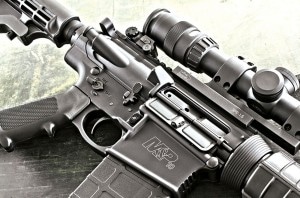
While offering a 20-round detachable box magazine and selective fire capability like the T44 and FAL, the AR-10 was otherwise very different. To reduce weight, it employed lightweight, aluminum-alloy upper and lower receivers, a direct-gas-impingement operating system and phenolic composite buttstock and handguard, which shaved nearly two pounds off the empty weights of the T44 and FAL. It also offered raised front and rear sights and a straight-line barrel/stock design—with the comb of the buttstock in-line with the bore axis—which greatly aided in controllability during full-auto fire.

But the AR-10 prototype had one other feature that proved to be its undoing. Over the vehement objections of Stoner, ArmaLite’s president insisted that the rifle be fitted with an untried, aluminum/steel composite barrel, which—not surprisingly—blew up during torture testing at the Springfield Armory. ArmaLite quickly refitted the prototype with an all-steel barrel, but the damage was done. The Army rejected both the AR-10 and the FAL in favor of the T44, which soon went into production at Springfield Armory as the M14.
Despite rejection by the U. S. Army, over 10,000 AR-10s were produced by ArmaLite licensees and purchased in limited numbers for evaluation or issuance to infantry or special forces troops by Burma, Cuba, Finland, Guatemala, Italy, Nicaragua, Portugal, Sudan and Germany.

On the civilian side, the AR-10 went nowhere until 1995, when Mark Westrom—a former Army Ordnance officer and owner of Eagle Arms—bought the ArmaLite brand and renamed his company ArmaLite, Inc. His engineers quickly redesigned the AR-10 by scaling up the Colt AR-15 and introduced it to the civilian market as the semi-auto AR-10B. Since then, a host of other AR manufacturers have brought out their own AR-10 clones, but they’re unable to call them AR-10s because ArmaLite trademarked the “AR-10” name.
The newest player in the AR-10 arena is Smith & Wesson, with their M&P10 chambered in 7.62 NATO (.308 Win.). The M&P10 is offered in four models: the standard all-black model ($1,619, tested), a camo version ($1,729) and two “compliant” models—one for the Democratic People’s Republic of California ($1,649) and another to keep the feel-good legislators in Connecticut, Massachusetts, Maryland and New Jersey happy ($1,619). One 5-round magazine is included with the camo model, and one 10-round magazine comes with each of the black guns.
Regular readers know that we’re big on first impressions, and those of the M&P10 were entirely favorable. The first thing that caught our eye was the gun’s Magnum-size flash suppressor. As it turns out, this Enhanced Flash Suppressor was designed by Smith & Wesson expressly for the M&P10, and is in the process of being patented. The flash suppressor is threaded onto an 18-inch, lightweight-profile, 4140 steel barrel 5R rifled at a 1:10” twist rate. Barrel diameter steps down just forward of the gas block, then back up to provide enough “meat” for the Enhanced Flash Suppressor.



